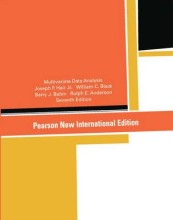I&R M Mean-Variance Analysis and the capital Asset Pricing Model Chepter
11 important questions on I&R M Mean-Variance Analysis and the capital Asset Pricing Model Chepter
What is meant with a market portfolio?
- Includes all risky assets
- And the weight on each asset is the market value of that asset divided by the market value of all risky assets
What is meant with the Tangency portfolio?
What is optimal investment?
- Market portfolio is approximated by a value-weighted index
- Risk-free asset is approximated by a short-term treasury bill
- Higher grades + faster learning
- Never study anything twice
- 100% sure, 100% understanding
What is a short-term treasury bill?
What is meant with a Systematic Risk?
(Example: Uncertainty about general economic conditions, such as national income, interest rate, exchange rate, or inflation.)
By which three factors are stock returns mostly explained?
- Return of value-weighted index portfolio minus T-bills rate
- Return of high book-to-market stocks minus return of low book-to-market stocks
- Return of small-capitalization stocks minus return of large-capitalization stocks
What are large capitalization stocks?
What are small capitalization stocks?
What are the assumptions of the Capital Asset Pricing Model?
- Investors care only about the mean and variance of their portfolio's returns.
- Markets are frictionless, which means there are no constraints in trading the asset and no transaction costs.
- Investors have homogeneous beliefs, which means that all investors reach the same conclusions about the means and standard deviations of all feasible portfolios.
What is Idiosyncratic risk?
- Unique risk,
- unsystematic risk
- Diversifiable risk
- firm-specific risk
Where is the tracking portfolio used for?
- Hedging: Take the opposite position of the hedged asset
- Valuation: Arbitrage pricing theory
- When the expected return of the tracking portfolio is not equal to the tracked asset, there exist arbitrage gains.
- Arbitrage gains are to make a risk-free profit with no cost in investment today
- Thus no-arbitrage assumption governs a relationship between risk and return, this is the arbitrage pricing theory.
The question on the page originate from the summary of the following study material:
- A unique study and practice tool
- Never study anything twice again
- Get the grades you hope for
- 100% sure, 100% understanding































